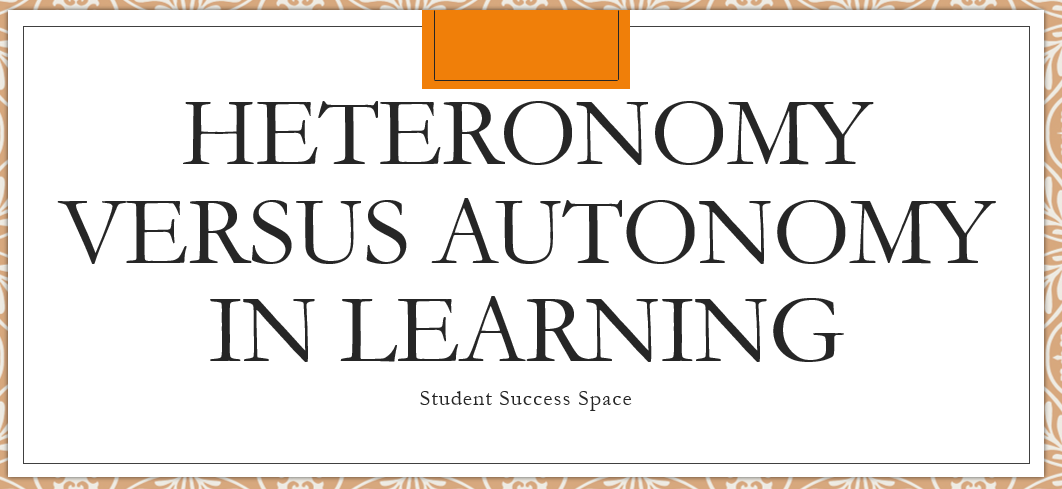
A conversation in research of the autonomous learner is the dichotomy between heteronomy versus autonomy in learning. Heteronomy, in the simplest of terms, is deferring to others, action that is influenced by a force outside the individual, while autonomy is the control of the individual. Let’s look at a list of characteristics for a deeper understanding.
The heteronomous learner is one that will be more egocentric. They are going to conform to those around them with a unilateral demonstration of respect. They tend to be more rigid and will have a blind faith in the authority figure. (Perry in his theory of intellectual development refers to this type of an individual in a dualistic phase of learning.) They will also be more other-directed when it comes to gaining knowledge as they will want an authority to give them information. They are a dependent learner.
In contrast, the autonomous learner is one that is not just independent but recognizes the importance of cooperation and need for a subject matter expert. They will demonstrate mutual respect and creativity. They are going to be more flexible, knowing that different topics require different approaches. They are inner directed instead of being other directed as the heteronomous learner.
Candy (1991) defines the autonomous learner as one who has the following characteristics:
“Conceives of goals, policies, plans and forms purposes and intentions of his/her own, independent of any pressure from others
Exercises freedom of choice in thought and action, without inward or outward constraints and restrictions on his/her capacities to learn
Uses the capacity for rational reflection, judging among alternatives:
On the basis of morally defensible, non arbitrary beliefs as to what is true or right, derived from personal experience and/or reflection
As objectively as possible
Using relevant and adequate evidence
Has the will and capacity to fearlessly and resolutely to carry into practice, and through to completion, plans of actions arrived at through 1, 2 or 3 points above, without having to depend on others for encouragement and reassurance, and regardless of opposition
Exercises self-mastery in the face of strong emotional involvements, reversals, challenges, and setbacks, and remains emotionally detached as far as possible
Has a concept of himself or herself as autonomous” (p109).
Sources:
Candy, P. (1991). Self-Direction for Lifelong Learning. San Francisco, CA: Jossey-Bass.
Subscribe to our YouTube Channel by clicking here.
By Tracy Atkinson
Tracy Atkinson, mother of six, lives in the Southwest with her husband and spirited long-haired miniature dachshunds. She is a teacher, having taught elementary school to higher education, holding degrees in elementary education and an EDS in higher education. Her passion is researching, studying and investigating the attributes related to self-directed learners and learning styles. She has published several titles, including MBTI Learning Styles: A Practical Approach, The Art of Learning Journals, Calais: The Annals of the Hidden, Lemosa: The Annals of the Hidden, Book Two, Rachel’s 8 and Securing Your Tent. She is currently working on a non-fiction text exploring the attributes of self-directed learners: The Five Characteristics of Self-directed Learners.

Comments are closed